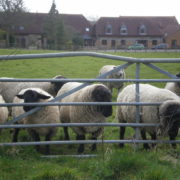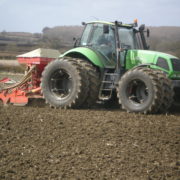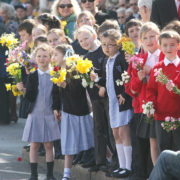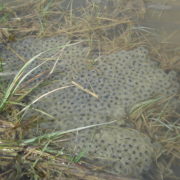Gloucestershire Warwickshire Railway GWR Steam Train

Gloucestershire Warwickshire Railway
The Gloucestershire Warwickshire Steam Railway (GWR, GWSR or Gloucs-Warks Steam Railway) is a volunteer-run heritage railway which runs along the Gloucestershire/Worcestershire border in the West Midlands, England.
The line was originally part of the Great Western Railway‘s Cheltenham–Stratford-upon-Avon–Birmingham line, known as the Honeybourne Line, built in 1900–1906, and runs through the Cotswold towns of Winchcombe and Bishop’s Cleeve.[1] The line was run down over the years and finally closed after a derailment damaged a stretch of track in 1976, with the double track being lifted from 1979.
The preservation group rehabilitated the line, starting steam train operations at Toddington in 1984 over 700 yards of re-laid track. In 1987 the line was restored as far as Winchcombe where the station was reconstructed using the former Monmouth Troy station building. The railway continued to re-lay track west of Winchcombe, through the 693 yard long Greet Tunnel, and past the villages of Gretton, Gotherington and Bishops Cleeve.[2] This culminated in the reopening of the line to Cheltenham Racecourse in 2003, by Princess Anne.
The GWSR runs trains from March to the end of December,[3] with the line closing during January and February for line and locomotive maintenance. The GWSR runs regular train services every weekend and most weekdays during the summer, and some weekends are used to host special events including steam and diesel galas, Day out with Thomas events, race trains and Santa Specials.
The railway operates a wide variety of both steam and heritage diesel locomotives, as well as heritage DMUs. These have included the world-famous locomotive 4472 “Flying Scotsman” and equally famous 3440 “City of Truro”, which in 1904 was the first engine to reach 100 mph. In 2013 the resident steam locomotives were ex-GWR ‘Modified Hall’ Class no.7903 ‘Foremarke Hall’, ex-GWR ’28XX’ Class no.2807 and an LMS-designed ‘8F’ Class which has been repatriated after a lifetime working in Turkey. To complement the running stock a collection of over 210 carriages and wagons of various origins has been compiled, many of which are still being restored.










